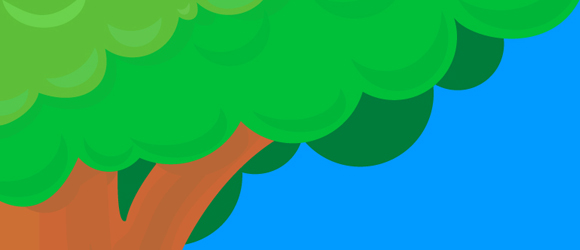All the Shades of Digital Design
- At April 14, 2013
- By sunhawk
- In Web Design
 0
0

The funny thing about being a graphic and web designer is that I never really planned to become an artist who used computers to make art, it was something that sort of fell into my lap, largely due to the highschool co-op placement I had at the Canadian Film Centre’s “New Media” program. I remember distinctly having my co-op teacher sit me down and tell me that she was having trouble finding an art-related placement for me, and that it was basically between a shop that did floral arrangements and this film school multimedia place. At that point, I knew only a little bit of basic Photoshop and some rudimentary HTML site building picked up, in my spare time, by studying other people’s source code, but I decided to go with the multimedia thing because arranging flowers all day long sounded really boring. Luckily for me, while a lot of what I encountered in the “New Media” program was completely new to me, I was able to get the hang of most of it and I had a boss that was cool and let me learn at my own pace, and if I couldn’t just magiacally figure out a program by playing with it (which is, in all seriousness, how I learned the basics of Flash and Director, among other things) that was OK too.
But it’s interesting how people assume that ability in one creative arena will automatically translate into other creative media. Sometimes it does, either in terms of similiar skill sets or personal aptitude for adapting one skill set (in my case) but there are definitely limits.
The same sort of assumption is true if you use computers: people will assume that if you can do one thing on a computer, you’ll be able to do anything else that involves a computer. This can lead to some awkward situations as you will end up being asked to do things that are entirely outside of your experience or education, and you have to explain that there are certain computer-related skills that can’t be picked up after just a few hours of reading tutorials on the Internet.
This confusion about who can do what is especially pronounced when you are applying for jobs, because you will encounter job ads that are either puzzingly vague (“Looking for a creative invidiual to create marketing materials”) or clearly written by an HR person who doesn’t know the difference between a Web Designer and a Web Developer and thus creates ads with misleading requirements.
What IS the difference, between a Web Designer and a Web Developer, you ask? Well, let’s have a quick review of the three most common computer-related jobs that have come up for me personally in terms of my particular skill sets, which has often led to this sort of confusion:
Graphic Designer/Desktop Publisher: works on 2D media of a huge assortment of types (web graphics, printed media like posters and catalogues, shirt designs and other printed goods like mugs, buttons, etc) with the common element being their graphics are generally static, flat artworks. Typical expertise includes: Photoshop, Illustrator, InDesign, CorelDraw, Quark, printing specs (CMYK, pre-flight, etc), and usually some degree of colour therory/art training.
Web Designer: usually has at least some graphic design skills, works mainly in HTML and CSS to design websites. May incorporate ready-made code in Javascript, PHP or other programming languages but does not generally write in the more complicated dynamic code languages. Some web designers specialize in Flash or assist developers in creating mobile websites and phone apps. Typical expertise includes: HTML, CSS, Photoshop, Fireworks, Dreamweaver, Flash, cross browser code issues, FTP and basic web hosting setup.
Web Developer: while web designers are charged with making the “front end” of the site (the pretty graphics and colours and fonts, etc), developers deal with the “back end” of the site, the structure of the site itself and any sort of “engine” that powers the more dynamic elements such as an online store or any sort of CMS (Content Management System, like WordPress that currently runs my art site) which require a database. Whereas HTML pages are static files, database files such as PHP are much more interactive and relative, that the code written within the site is directly affected by other files based on logical requirements of the site code – this can lead to confusing realizations that in one sense, there are no actual pages on your site, just templates and data that the database combines each time your site loads to display to each visitor. Some of the development language expertise includes: PHP, MySQL, Javascript, Ruby on Rails, Ajax, ASP, Python, C, C++, Perl, general wizardry, etc.
So regarding the overlap of these three jobs:
- I’ve met many Graphic Designers who could not build a website if their life depended on it.
- Generally most Web Designers do at least know how to use the programs that graphic designers use (like Photoshop) but there is often a disturbing lack of aesthetics training, which explains how so many websites out there are functional but look really awkward or just plain awful.
- And while many Web Designers like myself can barely understand just how these more complex sites work, let alone how to develop their code, it’s generally my experience that in turn, most Web Developers are equally baffled by graphic and web design.
And that’s really okay that most people can only do the one job, that’s the whole point of creating a website building team, if you aren’t lucky enough to find some wunderkid who can do all three easily. Of course, employers would love if they only had to hire one person to do everything, but I prefer to see having a team as something that really improves the creative process and tends to make for better websites: he process of both finding where each team member overlaps and filling in each other’s gaps provides an opportunity for discussion and brainstorming, which encourages creativity and innovation.
~Sunhawk









Get Social